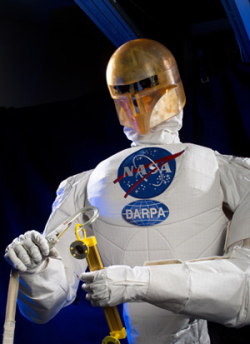 Picture: NASA
Picture: NASA
Robonaut was designed by the Robot Systems Technology Branch at NASA’s Johnson Space Center. This project was jointly collaborated by DARPA in an effort to develop and show a robotic system that can function as an EVA astronaut.
The Robonaut, which is the predecessor of Robonaut 2, no more uses special robotic grapples and targets, and several usual on-orbit robotics. However, it is still controlled by a human operator using a telepresence control system.
NASA tries to make machines that can help people work and explore in space.
Over the past five decades, space flight hardware has been designed to be maintained and handled by humans. So, in order for Robonaut to be effective as a repairman on spacecraft, it had to possess many features of a human being.
The hands of Robonaut, for example, feature 14 total degrees of freedom and are able to grasp and manipulate objects that are not specifically designed or adjusted for robots to handle.
With this robot astronaut, NASA aims to make robots work side by side with humans, especially in environments where it is quite difficult or dangerous for humans to go. Although the Robonaut was not actually flown into space, it introduced another era for robots working together with humans in space.
It is part of NASA's goal to make this space robot successfully work in space. Using the Robonaut project and its mechanism, avionics, computational architecture and telepresence control, NASA aims to help humans work in space.